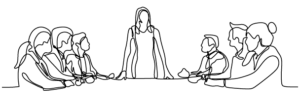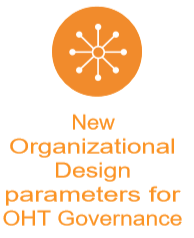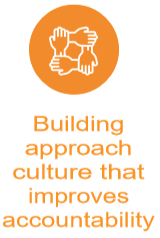“The greatest danger in times of turbulence is not the turbulence; it is to act with yesterday’s logic.”
Peter Drucker
As a health care leader, you’ve known for a long time that decisions about the health of local populations need to be made at a local level. You also know how critical it is for local health service providers to work together to create a seamless experience for patients. You’ve been working toward this, advocating for it, for years, decades even. As our political climate swings between the polarities of left and right you’ve been adapting, changing, flexing as best you can in the organizations you lead, trying to deliver on this mandate. But this latest swing is something different. It’s not just a swing back to centralized authority, although on the surface it might look like that. It’s a move that attempts to centralize administration even as it de-centralizes leadership and accountability.
Saving on administrative costs while distributing decision making and accountability is a profound integration of approaches and one that will require new thinking, new skills and new structures to implement successfully.
At Instincts at Work we’ve been evolving leadership thinking to realize the performance gains in this approach for years and the teams we have worked with are showing their readiness for such new approaches.
But based on conversations we’ve been having recently, it’s clear that we need to pay close attention to ensure we don’t “act with yesterday’s logic.”
Two traps we are prone to are:

We lay them out here in the hopes that you’ll be able to recognize them when and if you encounter them. Please note that this is a fictional scenario comprised of typical reactions that we have witnessed from working with dozens of attempted collaborations over the past decade.

This kind of scenario is very typical as individuals work through the complexity of uncertain peer motivations and develop an understanding of what it means to work together to negotiate the wants and needs of multiple, equally important, stakeholders.
Underlying these traps are a set of unconscious assumptions. If we aren’t deliberate about examining them and the impact of blindly acting on them, we risk undermining trust as we engage in more broad collaboration:

If one organization is viewed as having more skills and resources compared to another one organization usually has the sense of an imbalance of power. This can lead to the assumptions that power is being abused. Members who feel less status relative to other team members will often interpret (accurately or not) that the higher status member is taking advantage of the situation to protect their own power base. Such a perceived power asymmetry leads to the perception of a power grab. Leaders from high status organizations are often bewildered by this response from others as they see themselves as shouldering the burden of the performance and accountability.

- It is helpful in these circumstances for members to be aware of and able to name subconscious status threats. Then we can shift the potential conclusions that we make about each other as we try to equalize perceived power imbalances.
- Going slow, asking members for permission, acknowledging the value in the diverse skills, resources and contributions of all members can help to mitigate the threats that often undermine our best efforts at building the trust needed for collaborative relationships to grow.

Generally, leaders who are invited into partnerships and collaborative working relationships with other leaders have been successful at achieving results in their individual organizations. These leaders have often developed an identity and find a source of pride (and status) in being a leader who achieves results.
Note what happens when this leader steps into an arena with other leaders who experience varying levels of power asymmetry as described above, as well as varying amounts of goal directedness: Many healthcare organizations have a core value of making sure everyone in the organization feels listened to, and included which can run exactly contrary to our results oriented leader’s need for task completion and goal achievement. This tension between results and relationships is one that will need to be continually managed as we work together in OHTs.
The felt need of the hospital leader in the scenario above is to get the job quickly and cost effectively done which of course is central to the group’s success. Unfortunately, it can also create a threat response since the need to achieve often feels contrary to the values of group inclusivity mentioned above. Without strong coaching and facilitation skills and strong emotional sensing this dynamic inevitably results in ‘back room politics’ or worse, the forming of splinter groups for the sake of expediency as individuals seek to negotiate values that are in apparent conflict. In such cases, trust is quickly eroded.

- To avoid failing in these predictable ways as we attempt to build governance structures to enable OHTs, we must learn new peer-based skills for creating accountability and resolving problems sourced in power imbalances, different priorities and values and trust. Increasing the level of difficulty, we need to do all this in non-hierarchical partnerships between peers which means we can’t resort to traditional authority structures to break stalemates and make decisions.
The skills we need to master are:





Please join us on Sept 18th 12-1pm 2019 for a webinar exploring more tailored strategies and addressing more challenges of Navigating Turbulence in an OHT Climate.
You will learn about:
- Strategies to counteract power asymmetry
- The trap of consensus versus the possibility of consent
- How to balance an over focus on task with relationship building
- Identifying and easing common threats to build stronger collaborations
- The traps of yesterday’s logic when it comes to governance.
Bring your questions and dilemmas. Let’s get together to create something better!